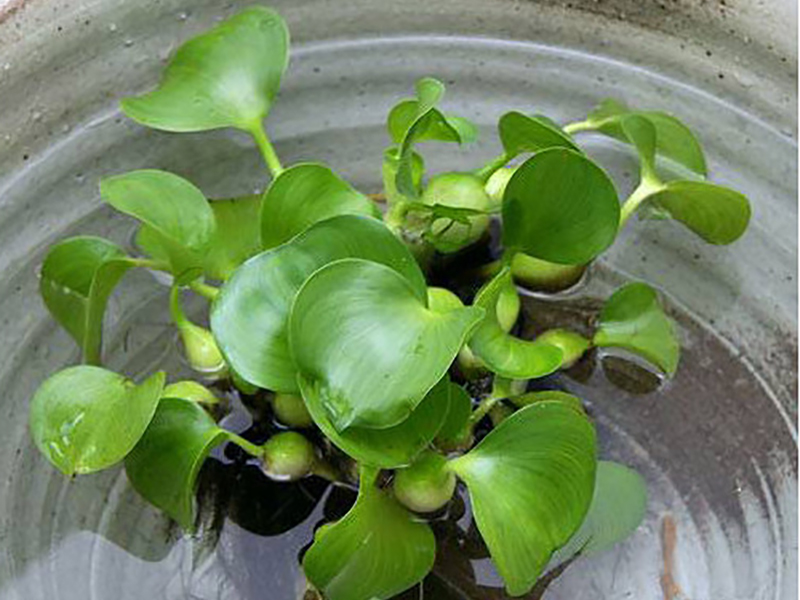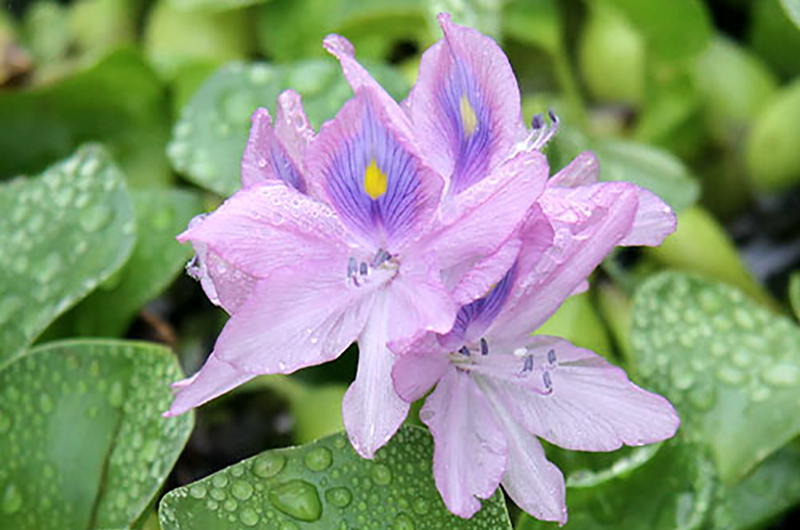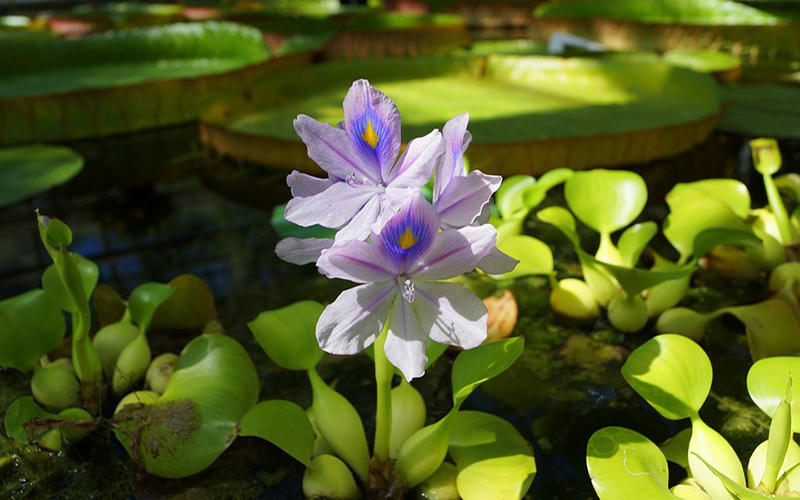rearing
Hotei-kusa is a water plant belonging to the family of monocotyledonous plants. It is sometimes sold in stores under other names, such as hotei-aoi (water hyacinth) or water hyacinth. In this article, we will explain the characteristics and how to grow hotei-kusa.
Table of Contents

Hotei-kusa is a water plant belonging to the family of monocotyledonous plants. It is sometimes sold in stores under other names such as "water hyacinth" or "water hyacinth.
Hotei-weed originated in South America, but is now widely distributed throughout the world (North America, Europe, Oceania, and Asia). Some people cultivate hotei-weed as an ornamental because of its blue flowers that bloom from spring to summer.
Hotei grass is one of the easiest types of aquatic plants to grow and can be easily grown by beginners. However, there is a second point to keep in mind when growing hotei-weed.
The first is water temperature. They prefer water temperatures in the 15-30°C range.At temperatures below 15°C (59°F), the leaves may become sore and their color may darken. Conversely, when temperatures exceed 30°C (86°F), the leaves will turn yellow and lose their moisture and become dry. Therefore, the easiest time to grow hotei grass is from spring to fall. In winter, it is advisable to place it in a sunny place during the daytime when the temperature is high and shelter it in a place where it will not be exposed to much cold air in the evening when the sun begins to set.
The second is sunlight. Hotei grass will be the variety that requires more sunlight than other water plants (such as Anacaris cabomba).If grown in a place without sunlight, the color of the plant will become darker and more elastic, as if it were rotting. Since hotei-weed is a fast-growing plant, it needs sunlight, and if it does not receive enough sunlight, it will quickly become damaged.

How do you take care of the hotei grass?The color of the leaves may turn black. If the leaves turn black, cut them off as soon as possible. If the leaves become more elastic and rotten due to lack of sunlight, it is better to throw away the rotten parts, and if more than half of the leaves are rotten, it is better to give up and throw them away.If you leave rotting horticultural plants as they are, they will not only look bad, but the rotting parts will cause water quality to deteriorate, so please treat them as soon as possible when you find them.
As for the roots of the Japanese hollyhock, you can cut them off when they have grown to a certain extent. If the roots grow too long, they may become entangled with the roots of the surrounding plants, which can be a problem later on.
There are two ways to propagate horticultural plants: seed propagation and nutrient propagation. In seed propagation, seeds are produced by pollination and placed in the soil to grow and multiply. In vegetative propagation, a tube is formed in the parent plant, from which offspring are born, and when the offspring grow to a certain size, the tube connecting the parent plant and the offspring is detached to form a single plant.Nutrients are also supplied from the parent plant to the offspring through a tube.
The most common way to increase the number of plants is by nutrient propagation. However, because the flower-visiting insects that are essential for natural pollination are rarely found in Japan, natural pollination is almost impossible, so artificial pollination is the only way to increase seedlings.

Hotei grass is a common type of aquatic plant that is often added with goldfish.
Some people who add hotei-weed use it for spawning. Hotei grass is a good water plant for goldfish eggs to attach to.The roots of the hotei grass roots are very dense, with fine, hairy, laying hairs that extend both horizontally and vertically. This density provides many places for eggs to attach. Hotei grass is often used for spawning killifish as well as goldfish. Many people also use it as food for goldfish fry, as the roots of the hotei-gusa can also be used as food for goldfish.
One thing to keep in mind is that hotei-gusa may not be suitable for goldfish kept indoors. For example, if you keep your goldfish in a living room that does not get much direct sunlight, they may not get the amount of sunlight they need.